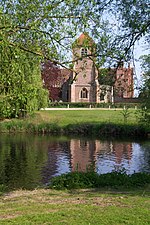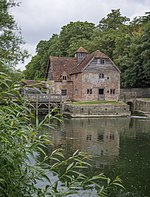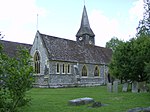Hardwick House, Oxfordshire
Buildings and structures on the River ThamesCountry houses in OxfordshireGrade I listed houses in OxfordshireReal tennis venuesSouth Oxfordshire District ... and 2 more
Tudor architectureUse British English from March 2018

Hardwick House is a Tudor house on the banks of the River Thames on a slight rise at Whitchurch-on-Thames in the English county of Oxfordshire. It is reputed to have been the inspiration for E. H. Shepard's illustrations of Toad Hall in the book The Wind in the Willows by Kenneth Grahame, although this is also claimed by Mapledurham House, Fowey Hall Hotel, Foxwarren Park and Fawley Court.
Excerpt from the Wikipedia article Hardwick House, Oxfordshire (License: CC BY-SA 3.0, Authors, Images).Hardwick House, Oxfordshire
Hardwick Road, South Oxfordshire Whitchurch-on-Thames
Geographical coordinates (GPS) Address Nearby Places Show on map
Geographical coordinates (GPS)
| Latitude | Longitude |
|---|---|
| N 51.4947 ° | E -1.0516 ° |
Address
Hardwick Road
Hardwick Road
RG8 7RA South Oxfordshire, Whitchurch-on-Thames
England, United Kingdom
Open on Google Maps









